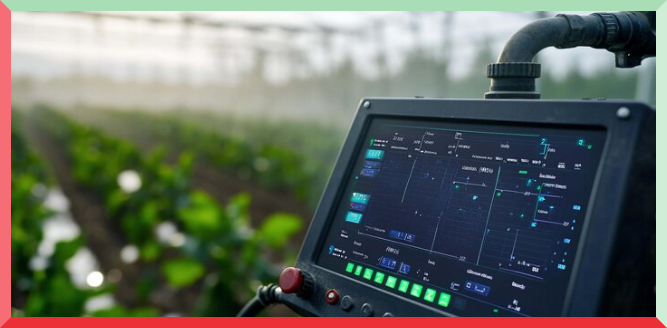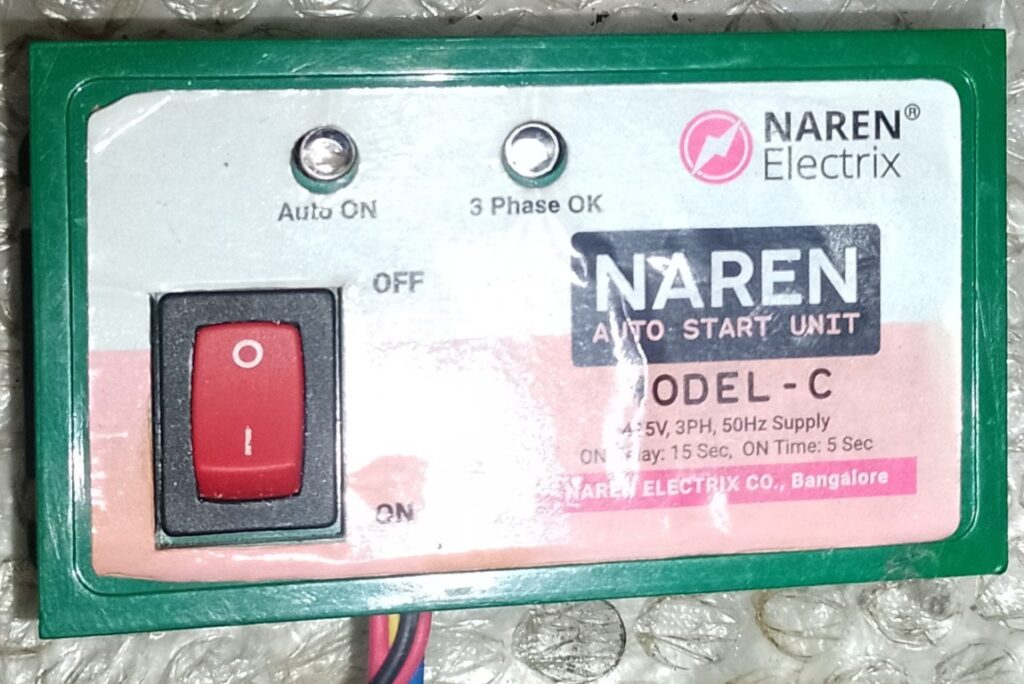
Manual watering can be challenging, especially for large farms or home gardens. Fortunately, automated irrigation systems simplify the process by ensuring efficient water distribution with minimal effort.
To implement an effective automated irrigation system, you’ll need specific tools. This post outlines the essential tools required to automate irrigation and optimize water usage.
Water Flow Meter
Water Flow Meters are helpful in drip irrigation, where you have to monitor the consistent flow of water.
By using the flow rate measured by the flow meter, you can accurately calculate the volume of water used for irrigation during a specific period.
Moreover, flow meters can help you discover problems with the irrigation system, such as costly leaks and wasting water.
Auto Starter

An auto starter is an essential piece of technology for sprinkler irrigation systems.
The Auto Starter simply starts and stops the pump automatically, which is very convenient if your farm is located far away from the home.
Some auto starters even offer voice control functionality through a SIM card, allowing you to control the pump by simply making a phone call.
Sensors
There are many sensors you can add to an irrigation system to automate the irrigation process.
Here is the list of those sensors.
Soil Moisture Sensor
Soil Moisture Sensor simply measures the water level in the soil if water level drops triggering supply water.
These sensors are placed below ground in the root zone of lawns to determine water needs.
The soil moisture sensor estimates the soil volumetric water content. Volumetric water content represents the portion of the total volume of soil occupied by water.
The controllers can be adjusted to open the valves and start irrigation once the volumetric water content reaches a predefined threshold.
Rain and Freeze Sensors
Rain and Freeze sensors interrupt the irrigation system when heavy rainfall and the temperature drop.
There are different types of Rain sensors available in the market.
- Original and the old type of Rain sensor is still in use today, where a small basin or cup is used to collect rainwater. If the water reaches a determined threshold, the weight of the cup interrupts irrigation. Debris on the cup can interrupt the irrigation cycle, so it is necessary to check the cup regularly.
- The second type of rain sensor uses two electrodes that are a specific distance from the bottom of the cup. The distance can be adjusted to allow for small rain events, and similar to the first type of rain sensor, debris can reduce accuracy by displacing water in the cup. When the water reaches the electrodes, the irrigation cycle is interrupted.
- The third type of rain sensor does not have any cup or besan; instead, it uses several disks which expand as they get wet, triggering interruption in the water cycle and also resuming the interruption when disks dry out. Using a disk reduces the regular checkup of debris. The only condition is you have to place these sensors in an open area where they receive enough rainfall.
Freeze sensors interrupt the irrigation cycle when the temperature drops below 32°F or 0 degrees Celsius, extending the lifespan of the irrigation system and preventing sidewalks and streets from icing over, thus avoiding dangerous situations.
Many rain sensors also come with a freeze sensor, so consider the weather situation in your area before buying.
Wind Sensors
Heavy wind can affect irrigation distribution uniformity across the landscape and decreases the amount of water infiltrating into the soil.
Wind Sensors interrupt irrigation systems if the wind speed exceeds the limit. By doing so, they ensure that water is not wasted through evaporation or uneven distribution caused by strong winds.
Plant Sensors
Plant sensors are still new but can be useful to detect changes in plant size, moisture levels, and other parameters that indicate the need for irrigation and alerting if insufficient water content or any yield-reducing tendencies in the field.
You can attach these plant sensors to the trunk of the plant or fruit. However, it is still new in the market, so there is no direct involvement of these sensors in the irrigation system, but data provided by the sensor helps you maintain the irrigation cycle.
Irrigation Management Mobile Apps
There are many Android and iOS mobile apps available to remotely control the irrigation system and also monitor the power and water consumption. Even these apps show weather conditions in your area.
If you have a specific brand or model of pump or irrigation system, it’s worth checking if there is a dedicated app available for easy remote management.
Final Thoughts…
By integrating these tools, you can automate irrigation, optimize water use, and reduce manual effort.
Beyond these tools, drones are also being used to monitor irrigation cycles, detect leaks, and assess crop hydration levels. Additionally, AI-driven solutions are emerging to analyze soil conditions and improve irrigation efficiency.
Automation is transforming agriculture and gardening—are you ready to upgrade your irrigation system?

Leave a Reply